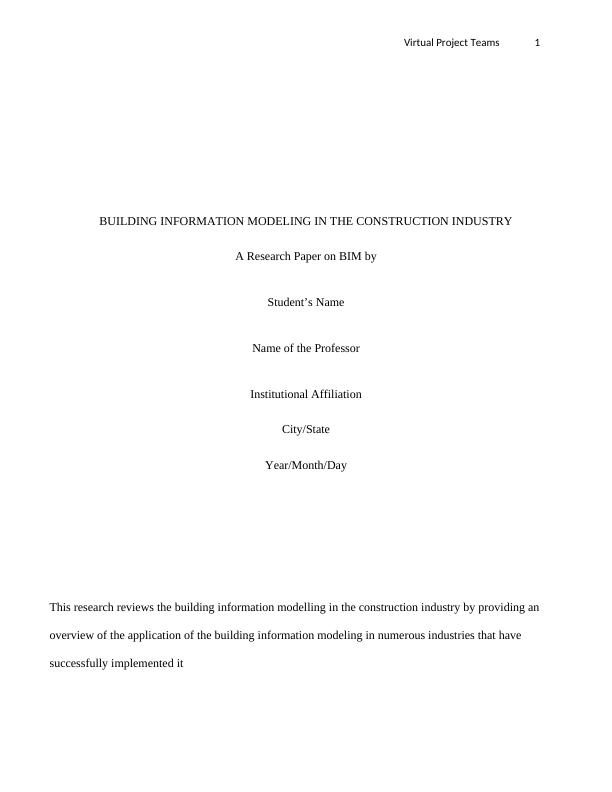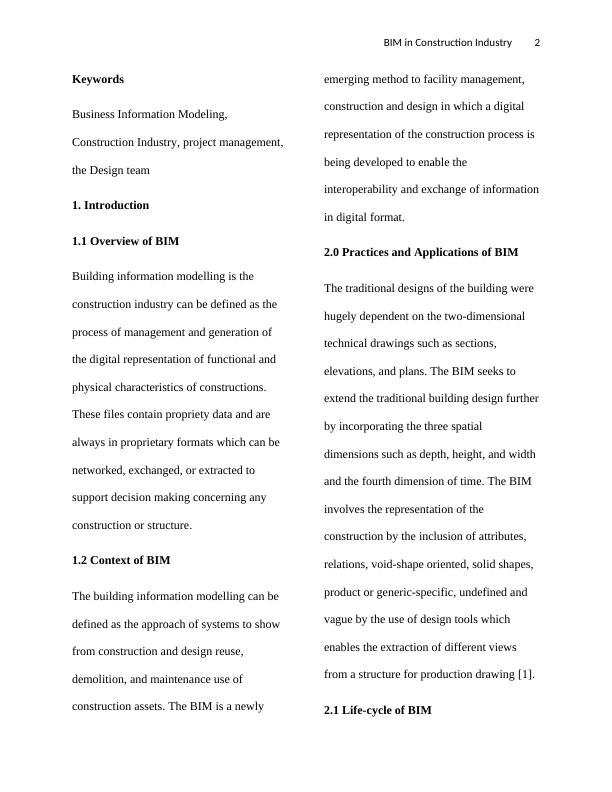Building Information Modeling in the Construction Industry
5 Pages841 Words456 Views
Added on 2023-06-05
About This Document
This research paper provides an overview of Building Information Modeling (BIM) in the construction industry, including its practices, applications, benefits, and barriers. It also discusses the factors considered when assessing the processes involved in BIM in the construction industry.
Building Information Modeling in the Construction Industry
Added on 2023-06-05
ShareRelated Documents
End of preview
Want to access all the pages? Upload your documents or become a member.
Building Information Modelling Implementation Plan
|9
|2944
|15
SRM751 Business Information Modeling
|15
|3685
|163
Building Information Modelling and MEP Assessment
|8
|1228
|304
Building Information Modeling - PDF
|14
|2852
|307
Review of Building Information Modelling (BIM)
|3
|1120
|184
Adoption of BIM Within the UK Construction Report 2022
|9
|4309
|31


